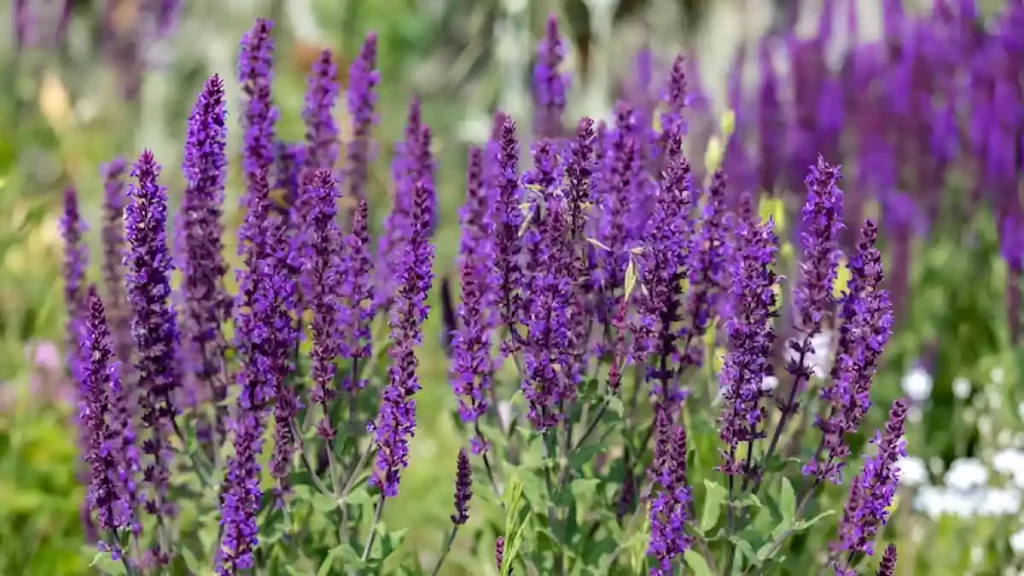If you’re curious about how to grow lavender from seed, you’re in for a delightful gardening adventure Lavender is a popular addition to any garden because of its gentle blossoms and calming aroma. Although cuttings are the usual method of propagation, cultivating lavender from seed can be a satisfying and economical way to add these lovely plants to your yard. This article will show you how to grow lavender from seed, whether you’re a novice wanting to develop your green thumb or an experienced gardener searching for a new challenge. Learn how to grow lavender from seed with our straightforward guide.
Here are some tips and tricks on how to grow lavender from seed:
- Choose a lavender seed variety that is appropriate for your climate and intended purpose. Lavender comes in a wide variety of forms, each with special qualities of its own.
- Depending on your climate, you can sow lavender seeds indoors or outside. Plant seeds indoors 6–8 weeks before the final anticipated date of frost. Sow seeds outside once the risk of frost has passed in the early spring.
- Lavender likes the soil to be slightly alkaline and to drain properly. If more drainage is required, incorporate more sand or perlite. Steer clear of clayey, thick soils that can hold onto too much moisture.
- Lavender seeds should be thinly sown on top of damp soil, whether indoors or out. Lavender seeds need light to sprout, so gently press the seeds into the soil’s surface; do not cover them with more dirt.
- Warm conditions are ideal for lavender seed germination. Try to keep the temperature in the range of 65–70°F (18–21°C) while the seeds are germinating. If you need to give constant warmth, you can use a heat mat.
- Maintain an even but not soggy moisture content in the soil as you wait for germination. To prevent rot, let the soil’s surface dry out a little bit in between waterings.
- It can take a few weeks for lavender seeds to sprout, so have patience and keep the right growing conditions in place.
- The seedlings can be moved into individual pots or the garden once they have produced multiple sets of genuine leaves. To prevent breaking the fragile seedlings’ roots, handle them gently.
- Before transferring seedlings into the garden, if starting indoors, let them gradually become accustomed to the outdoor environment. Hardening off is the process that helps avoid transplant shock.
- For lavender planting, pick a sunny area of your yard with well-draining soil. Full daylight is ideal for lavender growth, as it struggles in shadowed areas.
- Plant your lavender at least 12 to 18 inches apart to give them plenty of room to develop. Appropriate spacing promotes proper air circulation and helps shield against problems like powdery mildew.
- Once planted, lavender likes slightly dry conditions and can withstand droughts. Water the soil well but sparingly, letting it dry out in between applications. Since fungi can cause problems in lavender plants, avoid watering them from above.
Conclusion:
In conclusion, with the correct information and methods, learning how to grow lavender from seed can be a pleasant experience. You can enjoy the beauty and scent of lavender in your yard or home and improve your chances of success by heeding the advice provided. Don’t forget to select the appropriate lavender kind for your climate, as well as to give it regular hydration, enough sunlight, and soil that drains properly. Furthermore, you may successfully produce lavender from seed and make use of its many benefits for years to come with perseverance, care, and attention to detail. Follow our easy guide on how to grow lavender from seed and watch your garden flourish with aromatic, beautiful lavender plants.
Certainly! If you’d like to learn more, please consider following our WhatsApp Channel, Facebook, Instagram, YouTube, Twitter, and Pinterest.
A frequently asked questions:
Q1: How to grow lavender from seed at the best time?
A1: For best results, sow lavender seeds indoors 6-8 weeks before your area’s last frost date.
Q2: How to grow lavender from seed with appropriate fertilizer?
A2: To grow lavender from seed, put it in well-drained soil and use a balanced fertilizer with low nitrogen concentration to encourage good root development and flower production.
Q3: How do I protect lavender in winter?
A3: USDA zones 5–9 are suitable for lavender growth. For winter protection in colder climates, cover the base of the plant with pine needles or straw. Steer clear of rotting mulches that are thick and damp.
Q4: How long does lavender take to grow from seed?
Lavender seeds might take 2-3 weeks to germinate and usually take 2-3 months to mature into little seedlings. The plants may take 1-3 years to mature and yield an abundance of blooms.
Q5: Can you grow lavender from cuttings?
A5: It is possible to propagate lavender from cuttings, which is a quicker and more dependable way than starting from seeds. Softwood cuttings root in 2-4 weeks, but hardwood cuttings take somewhat longer but produce stronger plants.

